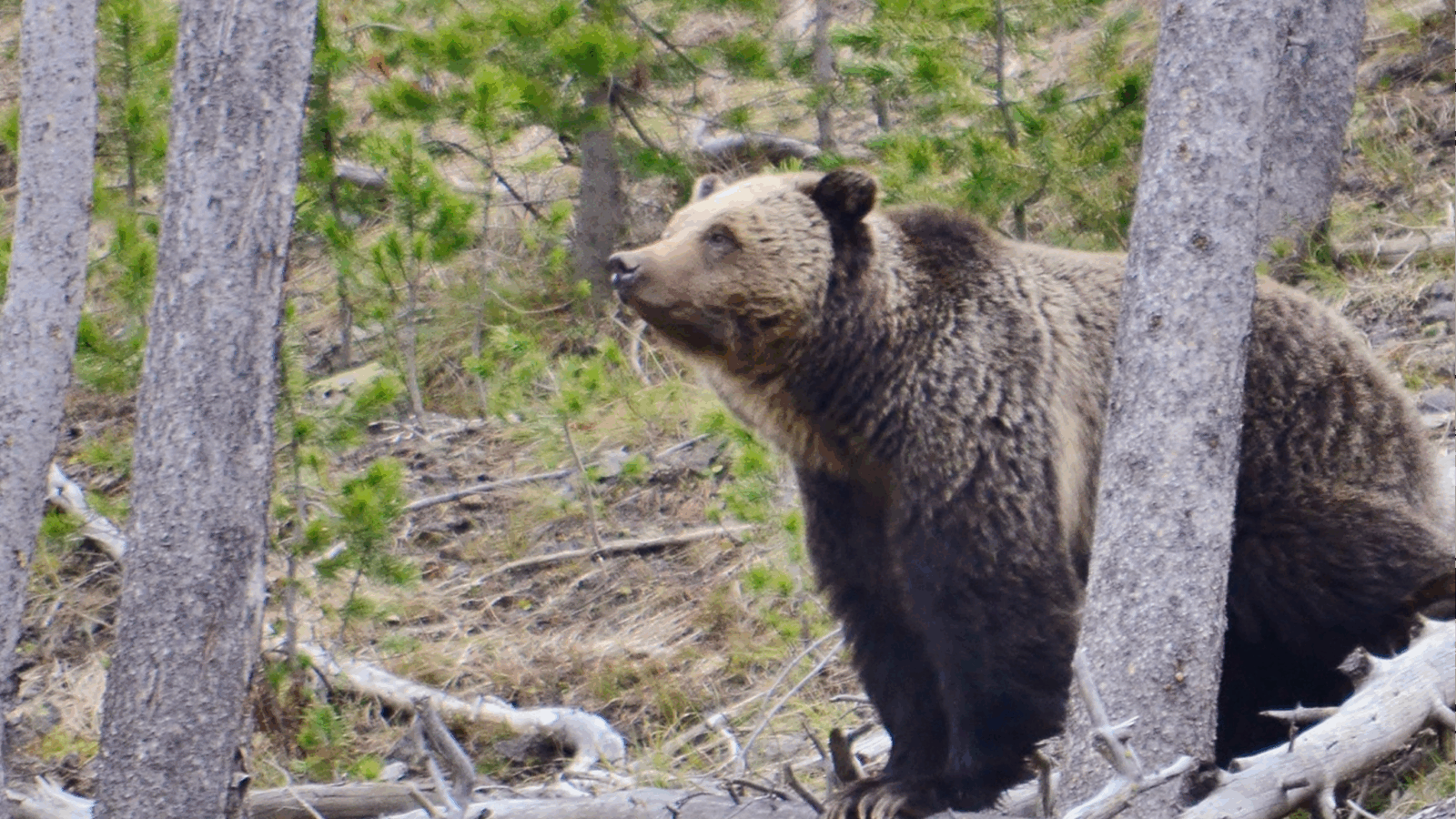A federal court ruled this week that the U.S. Forest Service and U.S. Fish and Wildlife Service broke multiple environmental laws in approving the Knotty Pine logging project in the Kootenai National Forest. The proposed project is deep in the Cabinet-Yaak grizzly bear recovery zone of northwest Montana.
“This decision is a critical win for the Cabinet-Yaak’s struggling grizzly bears,” said Kristine Akland, Northern Rockies director at the Center for Biological Diversity. “For decades federal agencies have turned a blind eye while roads carved up bear country, and grizzly bears have paid the price. The court’s ruling sends a clear message that the government can’t ignore facts or the law when it comes to protecting grizzlies.”
In a detailed 40-page decision, U.S. District Judge Dana L. Christensen found that both agencies unlawfully ignored the harms of illegal motorized road use on threatened grizzly bears — a long-standing problem across the Kootenai National Forest. The ruling held that the agencies’ analyses under the Endangered Species Act, National Environmental Policy Act and National Forest Management Act excluded known unauthorized road use from key habitat and road-density calculations.
The Knotty Pine Project authorized logging, burning and new road construction across more than 7,000 acres of the Yaak Valley. The court ordered the agencies to revisit their analyses and ensure they comply with the Kootenai National Forest land management plan and its access amendment. The amendment sets strict limits on road density and requires meaningful accounting of illegal motorized use.
“The Forest Service has tried to paper over the problem of illegal road use for decades,” said Michael Garrity, executive director for the Alliance for the Wild Rockies. “The court made clear that the agency can’t pretend those roads don’t exist, and that the science and the law both require real accountability for protecting grizzly bears.”
The Cabinet-Yaak grizzly bear population — one of six recovery zones in the lower 48 states — is among the most imperiled, with only about 50 bears remaining. Decades of logging, road building and motorized recreation have fragmented its habitat and limited recovery.
“For too long the Forest Service has ignored illegal off-road vehicle use, the presence of unauthorized roads and the harm they inflict on grizzly bears,” said Adam Rissien, rewilding manager with WildEarth Guardians. “This ruling affirms that the Forest Service must account for illegal road use, including on ‘zombie roads,’ which the agency pretends don’t exist until they come back to life for logging projects.”
“These projects on the Kootenai require significant capacity from our field crew, but we’re grateful that our citizen oversight was successful in protecting Yaak grizzlies and other components of a healthy ecosystem, utilizing the best available science,” said Rick Bass of the Yaak Valley Forest Council. “We’re grateful also to the attorneys who brought forth our case.”
Today’s ruling stems from a 2022 lawsuit conservation groups filed in U.S. District Court in Missoula to challenge the agencies’ failure to analyze the damages that logging and road use authorized by the project would do to the struggling, isolated grizzly population. In 2023 the judge halted logging and road construction pending a ruling on the merits of the case.
In another logging proposal, the Center for Biological Diversity and Alliance for the Wild Rockies filed comments opposing the U.S. Forest Service’s proposed Wilkes Cherry Project, which would authorize widespread commercial logging and new roads across more than 76,000 acres in the Lolo National Forest south of Thompson Falls.
The groups say the plan relies on outdated, unpublished science, ignores climate change and threatens imperiled wildlife.
“This massive industrial logging plan will wreak havoc on Montana wildlife by destroying and degrading hundreds of thousands of acres of this beautiful national forest,” said Akland, “This project is a textbook case of the Forest Service using a crisis narrative to push through damaging industrial logging. It’s a terrible plan based on century-old data, and it’ll deliver a major blow to elk, Canda lynx and other wildlife in western Montana.”
The Wilkes Cherry Project was approved under an “emergency” provision of the 2021 Infrastructure Investment and Jobs Act — yet it would take up to 10 years to implement.
“There’s nothing urgent about a decade-long clearcutting plan,” said Akland. “If this were truly an emergency, the agency wouldn’t be logging low-risk areas over the next 10 years.”
The Forest Service bases the project on an unpublished 1993 report that misrepresents logged 1930s landscapes as “natural,” using those inflated figures to justify large-scale cutting, say the groups. The agency’s own data contradict these claims, showing that previous regeneration harvests have created dense, Douglas-fir-dominated stands — the opposite of the “resilient” forests the project promises.
Despite citing climate resilience, the plan offers no modeling or analysis of how future drought, warming or regeneration failure will shape results, the groups say in their comments.
“The agency’s environmental assessment fails to meaningfully evaluate harms to species like grizzly bears, Canada lynx, bull trout, elk and pileated woodpeckers.
“The agency predicts bears will recolonize the area within a decade but never analyzes whether logging and new roads will block their recovery. It also violates Northern Rockies Lynx Management Direction standards by not mapping or quantifying habitat loss, omits required watershed-scale analysis for bull trout, and relies on outdated, incomplete data for elk and old-growth species.”
The groups urged the Forest Service to withdraw the environmental assessment and prepare a full environmental impact statement.
“True restoration means restoring function, connectivity and resilience, not repeating the mistakes of the past,” Akland said. “The Forest Service should start over and base this project on modern climate science and genuine public involvement.”

